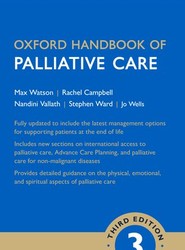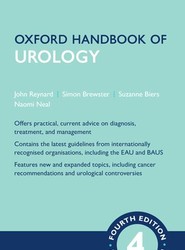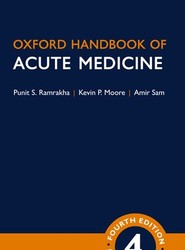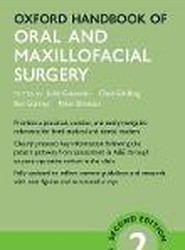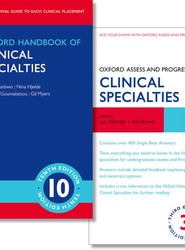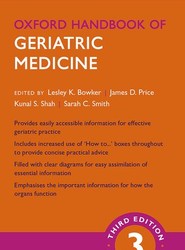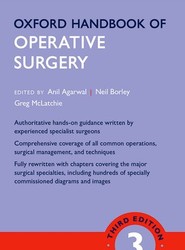(To see other currencies, click on price)
MORE ABOUT THIS BOOK
Main description:
The Oxford Handbook of Clinical Diagnosis is the first and only book so far to describe the differential diagnostic thought process so that it can be learnt logically and systematically. It also shows how to justify subjective diagnostic impressions clearly and logically in an evidence-based way. It provides the differential diagnosis of each symptom, physical sign and initial test result. The book uses pattern recognition tables which enable the reader to scan the page to see
which diagnostic application would apply best to a patients findingsor case history. The book is aimed at medical students and others who wish to improve their diagnostic skills. It describes how to justify diagnoses and management decisions verbally or in writing and clarifies what evidence is
needed to do so from research, and its statistical features. It provides senior doctors with a framework and examples to help teach trainees and students to approach diagnostic problems in a logical way and to justify their opinions. It provides all doctors with practical help when dealing with problems outside their immediate field of expertise, especially general practitioners and those faced with unforeseen situations.
PRODUCT DETAILS
Publisher: Oxford University Press (OUP Oxford)
Publication date: February, 2009
Pages: 824
Dimensions: 107.00 x 185.00 x 30.00
Weight: 415g
Availability: Not available (reason unspecified)
Subcategories: Accident & Emergency Medicine, Diseases and Disorders, General Issues, General Practice, Medical Diagnosis, Midwifery
From the same series
Max Watson
Harveer Dev
John Reynard
Punit Ramrakha
Amy Kravitz
Stephan Sanders
Peter Brennan
Gavin Clunie
Alastair K. O. Denniston
Andrew Baldwin
Hugh Devlin
Lesley K. Bowker
James Carton
Ian Wilkinson
Grenville Fox
Anil Agarwal
Philip Wiffen
Bernard Prendergast
Susan Burge
Andrew Baldwin
Sue Fitzpatrick
Murray Longmore
Robin N. Illingworth
Jeremy Levy
Keith Allman
Sabaratnam Arulkumaran
George Castledine
Jim Cassidy
Judith Collier
Chris Johnson
Drew Provan
Alastair Denniston
Hadi Manji
Keir Lewis
Laura Mitchell
Grace Robinson
Stephan Sanders
Judith Collier
Katharine Boursicot
Simon Steddon
Robert Davidson
Murray Longmore
John Guillebaud
Sabaratnam Arulkumaran
Julia Smedley
Ichiro Kawachi
John Reynard
Neil Borley
David Semple
Jonathan P. Wyatt
Gavin Spickett
Judith Collier
Robert C. Tasker
Domhnall MacAuley
Domhnall MacAuley
Saul G. Myerson
Lesley Bowker
Punit Ramrakha
Jonathan P. Wyatt
James Carton
Philip Wiffen
Joan Webster-Gandy
Stuart Bloom
M J Darby
Peter Brennan
Duncan Richards
Alan Hakim
Robert Wilkins
Stephan Sanders
Mark Bellamy
Peter Brook
Jason Payne-James
Susan Burge
Gavin Bowden
Jim Cassidy
Punit Ramrakha
Murray Longmore
Saul G. Myerson
Rogan J Corbridge
Grenville Fox
Chantal Simon
Guy Bradley-Smith
Bernard Prendergast
Alastair K. O. Denniston
Anthony Ward
Helen Turner
Max Watson
Steven Chapman
Mervyn Singer
Jeremy Levy
David Semple
John Reynard
Drew Provan
Judith Collier
Sabaratnam Arulkumaran
Sabaratnam Arulkumaran
Chris Johnson
John Guillebaud
Michael Eddleston
Edzard Ernst
Julia Smedley
Ian Greaves
Domhnall MacAuley
Simon Steddon
David Pencheon
Gavin Spickett
CUSTOMER REVIEWS
It is pitched perfectly for the student studying for undergraduate clinical exams and for the general practice specialist training knowledge test. It would also serve as a helpful aide memoir for doctors dealing with a patient presenting with a problem outside their speciality. The idea is brilliant — take symptoms, signs, and examination findings, and suggest the most likely diagnosis. Then discuss how best to confirm it...once again OUP have come up trumps with another fine addition to the handbook family. Whether you use its easy layout and concise size as a quick reference on wards or as a key text on those differential diagnosis questions in your private study, this book aims to help you come to terms with one of the hardest skills known to medical students. ...not only does this book provide clearly headed pages of presenting complaints together with lists of their possible differentials - its layout is specifically designed in such a way to make you consistently mimic that used by clinicians on wards everyday...The usefulness of this book to your clinical years, combined with your OHCM, shouldn't be underestimated a beneficial addition to any medical ward either at the nurses' station or in the doctors' office...would recommend this book for consultation at ward level.


